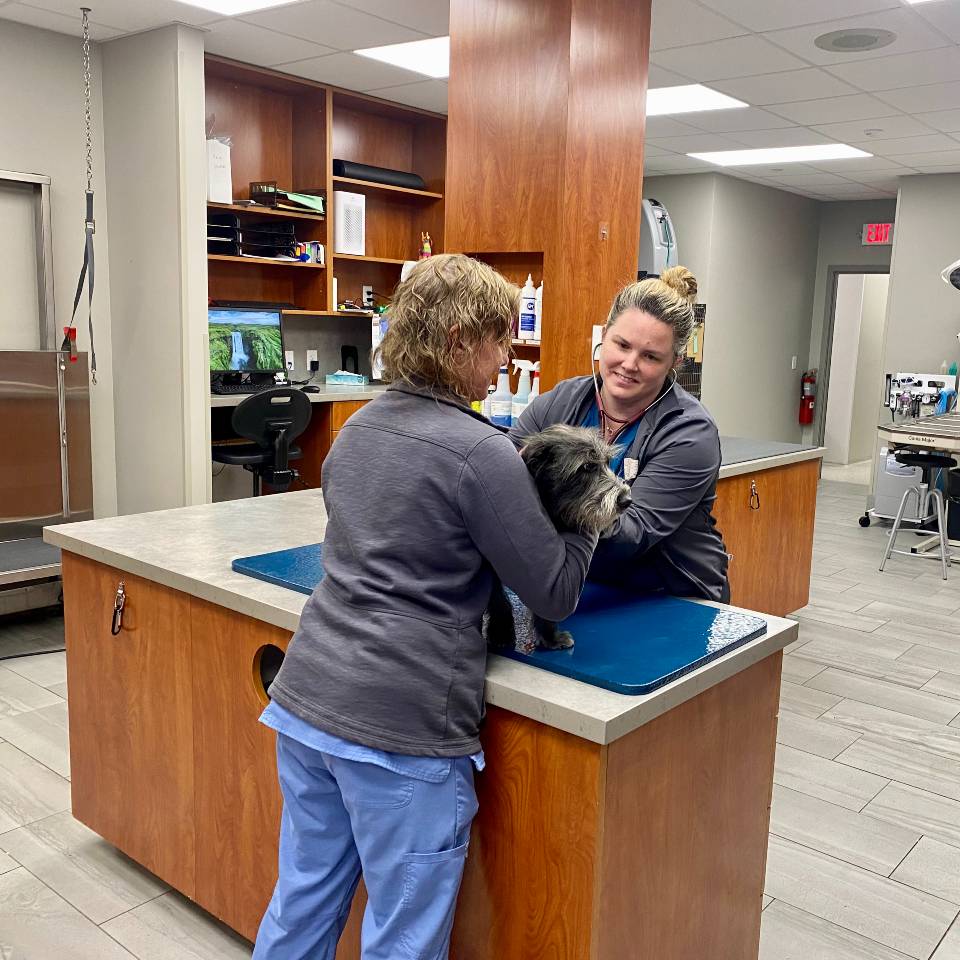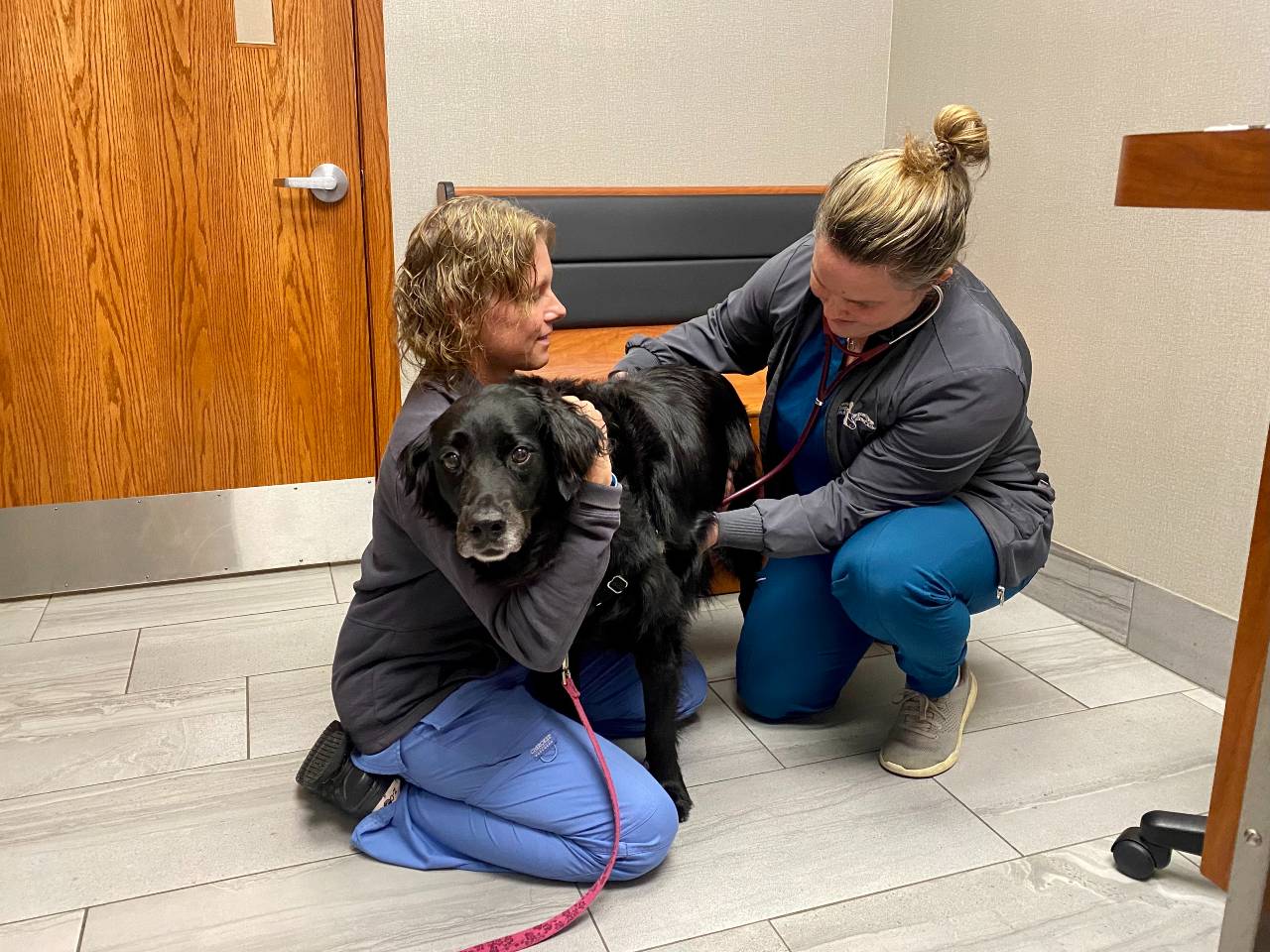
What happens in prep and treatment?
At Cascade Hospital for Animals and Breton Village Animal Clinic, providing the best quality care to our patients is our number one priority. We balance that with a need to serve each of our clients as efficiently as possible. That’s why you’ll find that we don’t always conduct your pet’s complete examination in the room with you. Instead, your pet will often receive some of his care in a well-equipped and spacious room we call the prep and treatment area.
Staying calm
“We sometimes get questions from clients: ‘Did you actually do an exam?’ or ‘Did you actually give the vaccines?,’” says Dr. Ashley Solnik. “And that’s understandable.” According to Dr. Solnik, the reasoning behind bringing pets to another room for certain elements of their examination – such as vaccines, blood draws, and other tests – is to make the experience as comfortable as possible for everyone.
“We make every effort to examine a pet in the exam room in front of our pet parent,” she says. “However, for example, some dogs can be very owner protective, so they won't necessarily let us get close to them because they're nervous and worried about what we're going to do, and they're trying to protect their owner and personal space.” When the pet is separated from the pet parent and brought to the prep and treatment room, they are often calmer and more relaxed, giving the veterinarian a chance to give a much more thorough exam.
“Sometimes” Dr. Solnik added, “if a pet is just generally nervous or anxious, it can be related to the fact that they're in a small confined space with new people. Taking them back to the prep and treatment area where it's a little bit more of an open space, they often will be a little less anxious with that because they don't feel as confined.”
A team effort Dr. Solnik and RVN Jamie examine Dory in an exam room. Sometimes it is better for everyone if the exam takes place in the more spacious prep and treatment area.
Dr. Solnik and RVN Jamie examine Dory in an exam room. Sometimes it is better for everyone if the exam takes place in the more spacious prep and treatment area.
Veterinarians and vet assistants rely on the prep and treatment area to help keep the appointment running as smoothly and efficiently as possible. “Most of our treatments that we do, if we're drawing blood or doing other testing, we generally are bringing our patients back to the treatment area,” says Dr. Solnik. “They are still getting the best possible treatment back there, and we’re still making certain to give a full, thorough exam as we would in the exam room.”
Often if the pet is receiving care in the prep and treatment area from the vet assistant, that allows the veterinarian and client to focus on their conversation, without the distraction of a barking dog or frightened cat.
“When a pet is nervous, the pet parent can't necessarily give us their full attention, and we can't really talk adequately with the pet in the room.” With the pet in the treatment area, the client can better concentrate on asking questions and the veterinarian can more easily share vital information while other services are being completed.
“It’s just a good way for us to give patients the best quality care in a way that works for everyone,” says Dr. Solnik.



